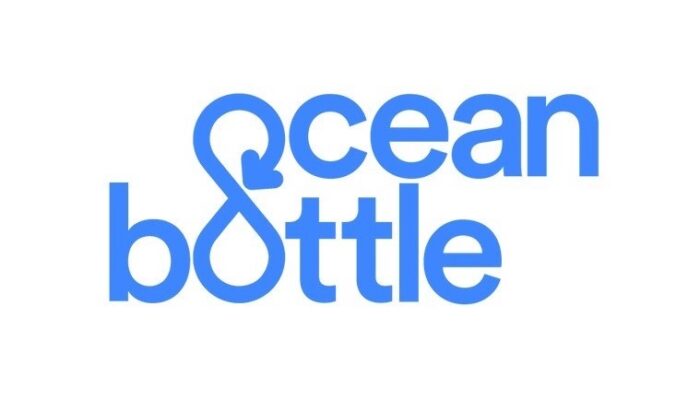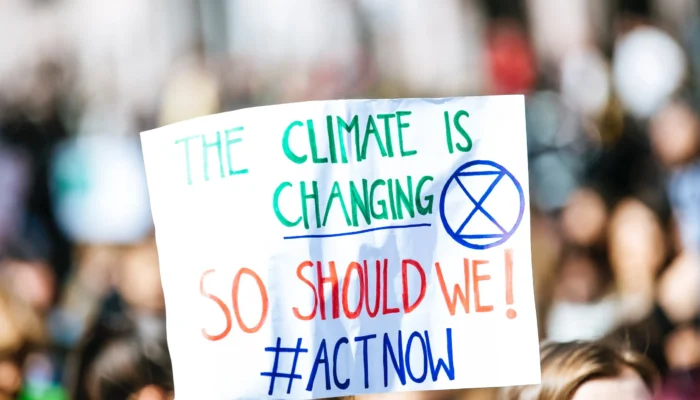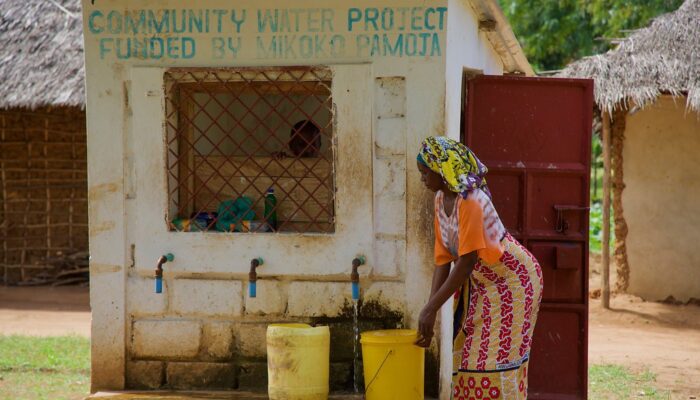
Mark Huxham and David Sumner (10min read)
Three metres was as far as we could go. Knee deep in viscous mud and dripping with sweat, we had pushed our core to its limit, like a teaspoon slipping into a vast black blancmange. We don’t know just how deep this organic-rich sediment underlying the mangrove forest goes; we do know it contains at least 1500 tonnes of carbon per hectare, 8 times more than a typical terrestrial tropical forest. These huge reserves of below ground carbon make mangroves one of the world’s most powerful natural carbon sinks. As these forests are destroyed – for shrimp farms, agriculture, industry, timber and palm oil – this trapped, water-logged carbon is oxidised and released. If they were all lost tomorrow, the resulting carbon belch could exceed total anthropogenic emissions for two years. So the future of the planet is now linked to the fate of natural carbon stores such as mangrove swamps, peatlands and tropical rainforests. Last year the Intergovernmental Panel on Climate Change analysed what chances we had to limit global temperature rise to 1.5°C above the pre-industrial average; all their positive scenarios require the rapid conservation and enhancement of these sinks. Recent work by Bastin et al. has confirmed that restoring and enhancing natural sinks is one of the most effective responses we can make in the face of the climate emergency. We need to drastically reduce our carbon dioxide emissions (keeping fossil fuels safely buried) and at the same time preserve and expand forests, peatlands, marshes and seagrass meadows.
Mangrove forests are natural marvels of evolution, brimming with astonishing adaptations and sublime beauties. They provide homes to wildlife and nursery grounds to fish, purify water and protect shorelines from erosion. But despite all these benefits their destruction continues, because short-term economic and political interests win out. However, there is now a way to convert one of these benefits into cash. By calculating the amount of carbon that the forests can absorb and store, and by designing projects that ensure this carbon continues to be sequestered, we can sell carbon credits on the voluntary carbon market. To commodify the forests for carbon may seem crass. But after 20 years working for mangrove preservation and failing to turn the tide on the relentless destruction of these forests, selling carbon credits to fund community-based conservation has finally provided a practical way to conserve them at the Kenyan sites where we work.
Offsets and credits
The title of this paper includes the term offsets but we will be also talking about carbon credits.
A carbon credit is a generic term for any tradable certificate or permit representing one tonne of carbon dioxide or the equivalent amount of a different greenhouse gas.
A carbon offset is a reduction in emissions of carbon dioxide or other greenhouse gases made in order to compensate for emissions made elsewhere; most people and organisations who purchase carbon credits do so in order to offset their emissions.
Broadly speaking carbon offsets function in two ways: First, they help to reduce the emission of greenhouse gases, for example by promoting renewable energy and energy efficiency. Second, they contribute to the improvement and enhancement of carbon sinks, for example through afforestation or the conservation of seagrass. Projects in the first category help to prevent potential emissions: if we replace a coal fired power station with an offshore wind farm, this makes a difference to carbon dioxide emissions in the future. Projects in the second category help to reduce the carbon dioxide that is already in the atmosphere. But some projects do both at once. For example keeping a mangrove forest healthy will allow continued uptake of carbon, typically at the rate of between 2 -8 tonnes C ha-1 yr-1, and prevent the release of all the carbon currently stored in it. It is this latter function that has such important potential for the conservation of tropical forests.
So if the activities of an individual give rise to 10 tonnes of carbon dioxide emissions, she could purchase carbon credits equivalent to those 10 tonnes. These would support, for example, a forestry scheme which would be a sink for that carbon dioxide. The cost of this carbon depends on the expenses of running the project; in most reputable schemes, these will include associated benefits for local people, for example improved education, livelihoods and wildlife conservation.
Some examples
If you take a return flight from London to Hong Kong this will result in the emission of about 4.6 tonnes of carbon dioxide. To offset these emissions you could contribute to a project that is enhancing carbon sinks. If the price of credits is, say, $10 a tonne, the donation must be at least $46.
But flying may not be the best example. When these sorts of calculations are discussed, a common response is to say that ‘we shouldn’t be flying at all.’ Fair enough: most (about 75-80%) flying is done for tourism and no-one really needs to fly, although those of us who have close family in other countries may not agree.
A better example is driving a car, where the ‘need’ is rather more nuanced. Those living in rural areas with little public transport are often genuinely dependent on a car. According to Mike Berners-Lee, driving a car from London to Glasgow and back (about 900 miles) would result in emissions of 0.33 tonnes carbon dioxide equivalent for a small car and 1.1 tonnes for a large four-wheel drive. If we assume an intermediate figure of 0.5 tonnes per thousand miles, and an annual mileage of 10,000 miles, this gives a total of 5 tonnes carbon dioxide equivalent per year, roughly the same as a return flight from London to Hong Kong. So for many individuals, driving a car will be a significant part of their carbon footprint. Whilst the use of ultra-low emission vehicles is growing, in Scotland (where we live), they only make up (as of December 2018) 0.4% of all vehicles licensed. What should we do? Pressure governments to move faster to de-carbonise our transport system? Of course. Move if possible to electric vehicles, public transport, walking and cycling. Absolutely. And for those carbon belching miles that we cannot (yet) avoid? Individuals can and should choose to offset.
Objections and challenges
One immediate objection is – ‘how do we know that the money we donate is going to be used to good effect’? Similar objections can be raised about any charitable donations (and indeed fraud and incompetence could be part of any transaction in a market economy). As Peter Singer argues in ‘A Life You Can Save’, such objections should be met with due diligence, rather than used as an excuse to do nothing – we can find out what donations are good value and what are not (and campaigns such as Effective Giving do just that). The carbon market supports a number of accrediting organisations with rigorous procedures required by the projects they endorse.
But why bother with carbon offsets at all? We could simply encourage individuals to donate to accredited projects that improve carbon sinks. One of the advantages of carbon offsets is that they help make people fully aware of their own contributions to the climate crisis since they require the calculation of carbon footprints or at least of carbon emissions. As awareness of their own carbon footprints grows, people who purchase carbon credits will be less likely to believe that the purchase ‘permits’ further transgressions. Critics of offsetting have suggested the opposite – that people will purchase carbon credits as an alternative to changing their lives and campaigning for system change. That is theoretically possible but, like criticising giving to charity because the money may be misused, is a claim that should be tested against the facts. In our experience people who purchase carbon credits are those who are engaged with the politics of climate change and are wrestling with some of the difficult trade-offs; they are striving to both reduce their footprints and to offset what they cannot reduce.
Indulgences
George Monbiot has compared the purchase of carbon credits to the sale of indulgences in the Netherlands in the 15th and 16th centuries. In the modern world indulgences have a bad reputation, largely because of the corrupt practices of the late medieval Church and papacy. A particularly noteworthy example is Pope Leo X, who raised money for the completion of St Peter’s basilica in Rome by the ‘usual late medieval method of raising funds, the issue of an indulgence‘. The abuse of indulgences was one of the main drivers of the Reformation.
But the corruption of indulgences should not be allowed to obscure their original meaning, and indeed, their meaning for Catholics today. An indulgence is not the purchase of a pardon which automatically secures the buyer’s salvation or releases the soul of another from Purgatory. According to the Catechism of the Catholic Church:
The authorities of the Church have two aims in granting indulgences. The first is to help the faithful to expiate their sins. The second is to encourage them to do works of piety, penitence and charity, particularly those which lead to growth in faith and which help the common good. (emphasis added).
In other words, the recipient of an indulgence has to do something, such as acts of charity to others. It is a way of reducing the amount of punishment one has to undergo for sins.
In a secular world, it may seem inappropriate to use the term ‘sin’. But a term such as this is not a great distance from a recent statement by David Attenborough: ‘my generation has done terrible things’.14 David Wallace-Wells does not hesitate to use the word: ‘If they work, carbon capture plants will deliver industrial absolution for industrial sin – and initiate, as a result, a whole new theological romance with the power of the machine.’
So the ‘terrible things’ we have done – our excessive emissions of carbon dioxide – will be punished by extreme weather and high temperatures, and the purchase of carbon offsets will help to mitigate this punishment. And the sins of the fathers will be visited on the children16, since in order to avoid climate catastrophe we will need to keep on investing in, expanding and protecting natural carbon sinks well beyond our generation. This means offsetting in the future for legacy carbon that was produced in the past. In the UK we have around 1% of the world’s population but are responsible for more than 6% of all the anthropogenic carbon dioxide that has accumulated in the atmosphere; climate justice demands we deal with this dirty legacy. Current projects that pioneer ways of investing in carbon sinks are laying the foundation for this. They are doing the science, training the foresters, recruiting the volunteers and building the institutions that will help ensure we have practical and just ways of conserving and expanding carbon sinks, using money that may in future come from governments atoning for their history of carbon profligacy.
Why should individuals bother?
It is sometimes argued that any contribution an individual can make to mitigate climate change is so small, it’s not really worth it – we need to concentrate on campaigning for political change. Yes, obviously political action is essential, although not all of us are suited to it; but surely individual actions are important too. These show authenticity and inspire others. Of course, we can’t do everything, but to do nothing is an abdication of our responsibility.
In the words of Mike Berners-Lee:
The UN climate negotiations in Copenhagen and elsewhere have surely taught us that it isn’t enough to hope that world leaders will sort things out on their own. So the question is: where does leadership come from? My answer is that it can come from anywhere and we need it to come from everywhere at once. If the Chinese middle class wants a Western lifestyle, then Western lifestyles had better become lower carbon. Who can start that off? Anyone can. Anyone who finds a way of enjoying life more for less carbon is setting a standard for others. Anyone who chooses a lower-carbon food is helping the supermarkets to emphasise that product. Any supermarket that improves and promotes its lower-carbon range is helping its customers to enjoy low-carbon food. All of this helps the political parties to move into a low-carbon position. If you can find a way of being happier but with a smaller footprint, you are a leader.
Several thinkers (e.g. Dale Jamieson and Derek Parfit) have pointed out that the industrial revolution, and especially the exploitation of fossil fuels that drove it, has irrevocably changed the moral landscape. Through most of human history, people lived in small communities, in which the actions of one individual would only affect their immediate neighbours. With the advent of fossil fuels, everything we do has a global effect. Something as trivial as cutting the grass with a petrol mower results in additional carbon dioxide emissions. Although the consequences for an individual on the other side of the world may be imperceptibly small, this does not mean that the action is morally insignificant. In a globalised world, ethics has been globalised. Consider the example of a firing squad. There are ten men to fire the lethal bullets, rather than one, so that no individual feels the full weight of responsibility for the death. But most people would say each member of the squad does in fact share responsibility. Now imagine a ‘firing squad’ of ten thousand people – each one mowing their lawn, and all collectively sharing the responsibility for the death, from storm damage, heat stroke or starvation, that results.
The practicalities of purchasing carbon offsets
So how to go about purchasing carbon credits for carbon offsetting? The first question should be ‘can I avoid emitting this carbon in the first place?’ If the answer is no, then you should be able to calculate how much you are responsible for from the many free carbon calculators on-line. Be aware, however, that they will use different assumptions and may give different results (particularly if you are looking at the effects of flying). Avoid just choosing the smallest footprint you can find. Then consider a project that fits best with your concerns and that you can trust. For example our work with mangroves (called Mikoko Pamoja) is accredited by Plan Vivo, a charity that specialises in community-based forestry. Other schemes are the Verified Carbon Standard and the Gold Standard. There is no one price for a tonne of carbon dioxide – the amount you pay (typically £5-£12 per tonne) will depend on the project you support and some bring many additional benefits (so called ‘carbon plus’) as well as offsetting.
Imagine the world thirty years from now. Our best hope is that temperatures are only 0.5 degrees above the present. We have eradicated carbon emissions from our economies and use only renewable sources of energy. Even in this best-case future, we still need to deal with the legacy carbon polluting our atmosphere for centuries to come. We already know how to do this; it is through the conservation and enhancement of the beautiful natural carbon sinks that enrich our world in so many ways. Carbon offsetting is not the destination, but it can be a positive step towards it.


